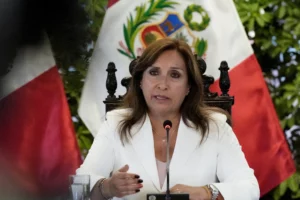(Analysis) President Dina Boluarte’s term has been a rollercoaster since assuming office 15 months ago, without winning widespread support among Peruvians.
Her leadership faced its toughest test from late 2022 to early 2023, with massive protests demanding early elections.
Alberto Otárola stood as Boluarte’s chief defender during this period, especially after she succeeded Pedro Castillo following his controversial move against Congress, igniting protests.
The government’s crackdown on demonstrations led to 49 deaths, sparking international outcry and being labeled by rights groups as “extrajudicial killings.”

Otárola’s departure due to harassment allegations signals a significant shake-up, marking Boluarte’s third Prime Minister change amid government instability.
This departure signals a broader political crisis, exposing vulnerabilities in Boluarte’s administration.
Despite challenges, Boluarte denies any governmental crisis, emphasizing his commitment to Peru.
The minimal change in her cabinet and Otárola’s continued presence have sparked further criticism, emphasizing a perceived lack of change.
Boluarte’s defense of her brother Nicanor against conspiracy allegations further complicates her administration’s narrative.
Leading Peru through turmoil, Boluarte’s governance and crisis management draw scrutiny, domestically and internationally, amidst the nation’s division.

